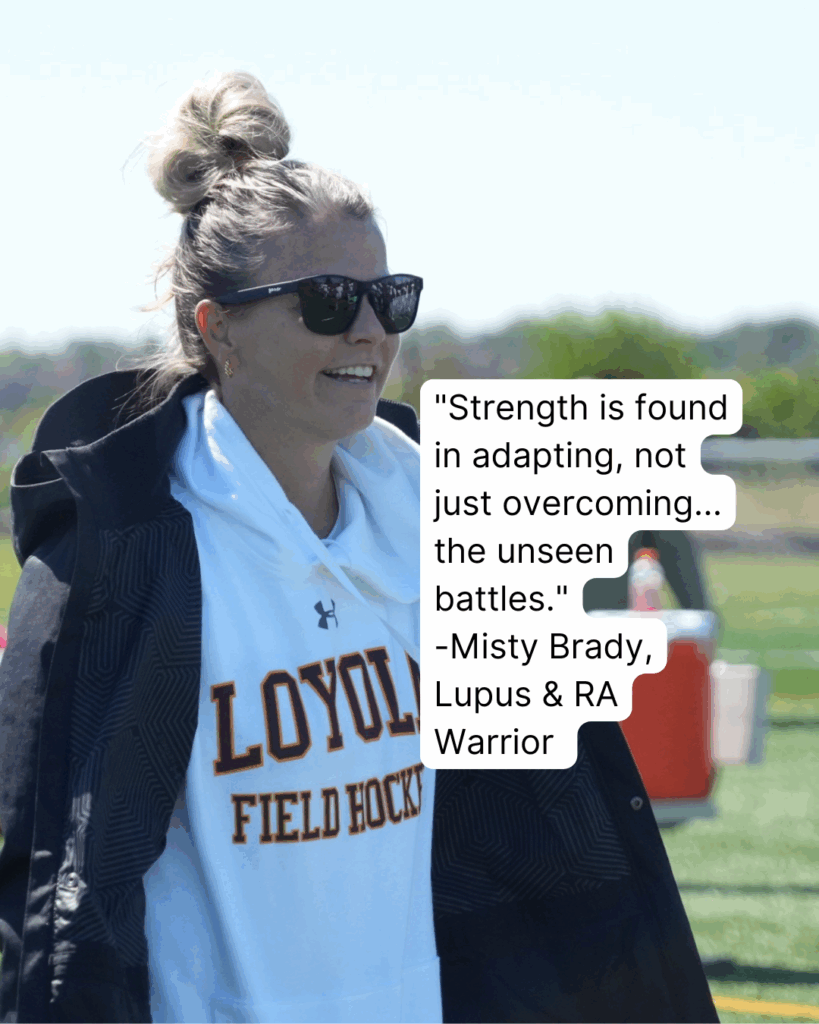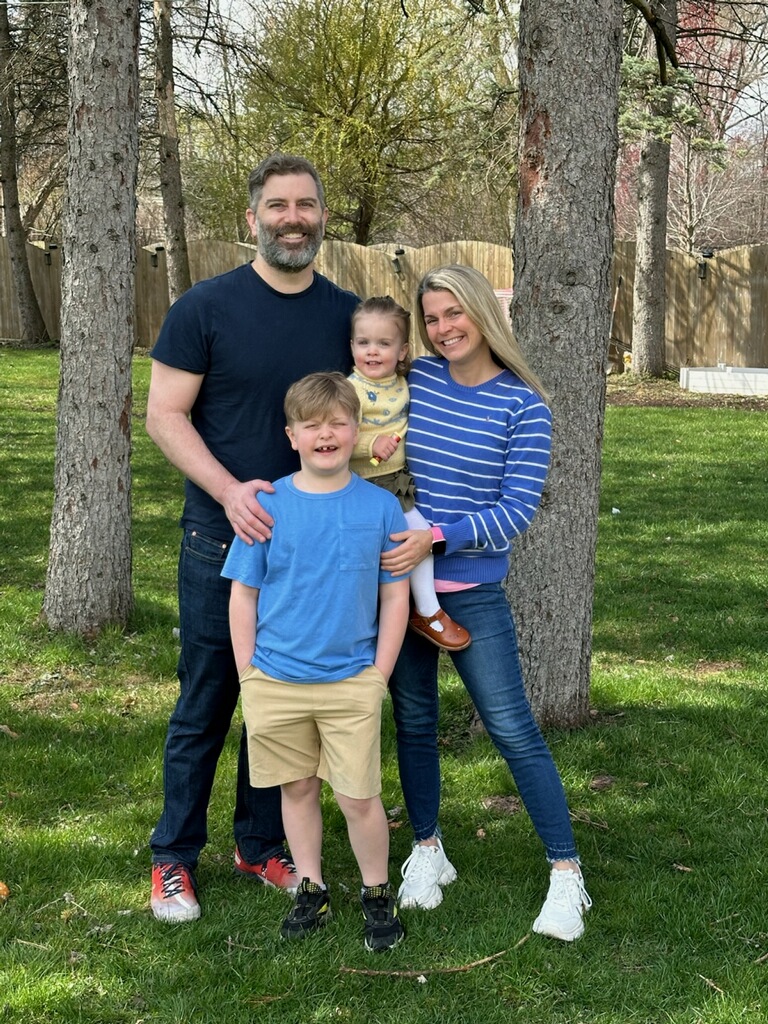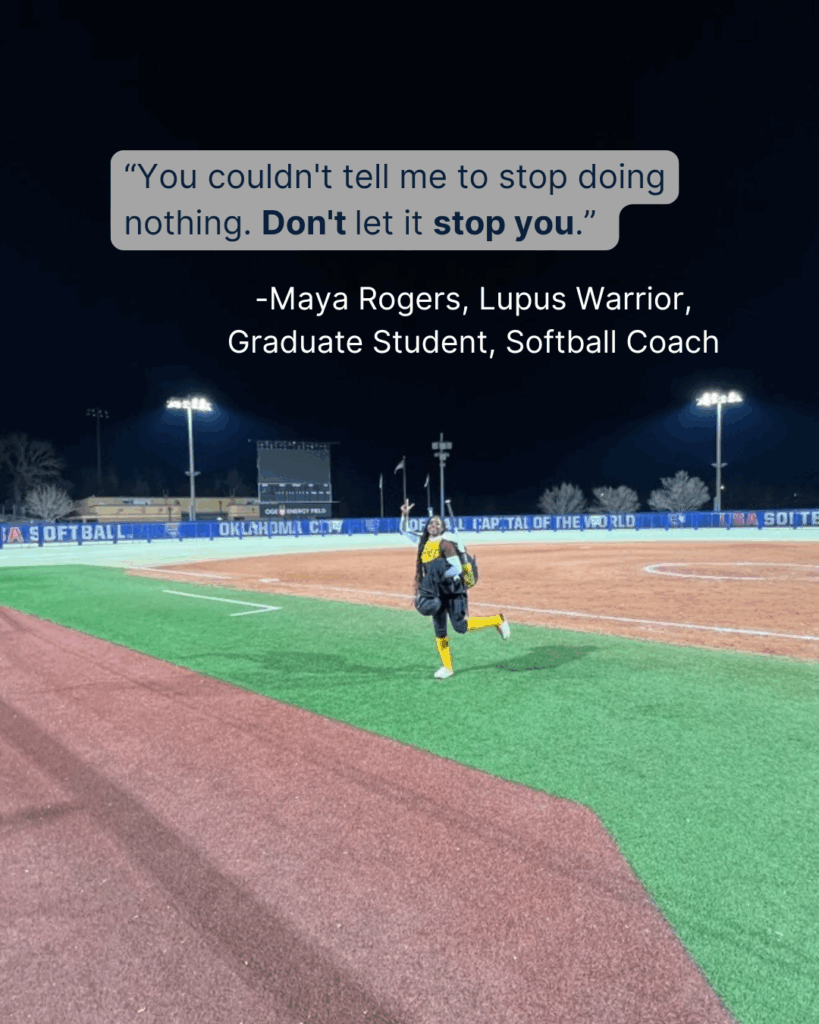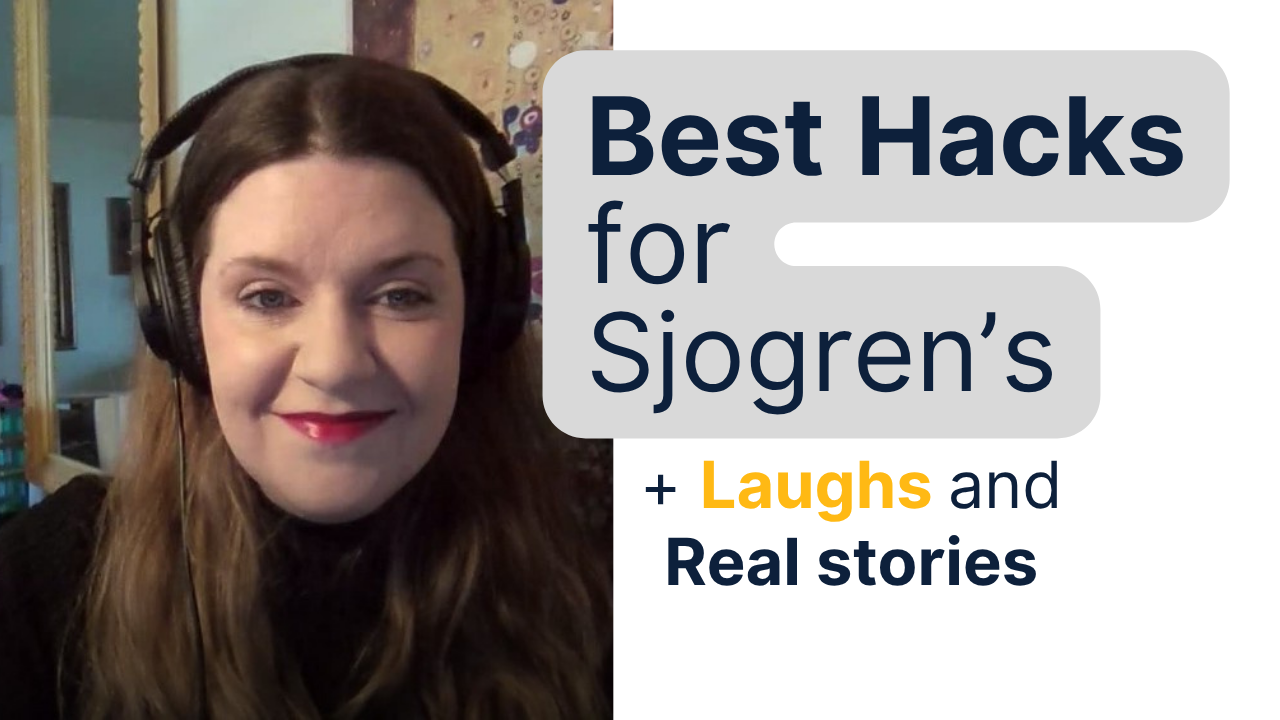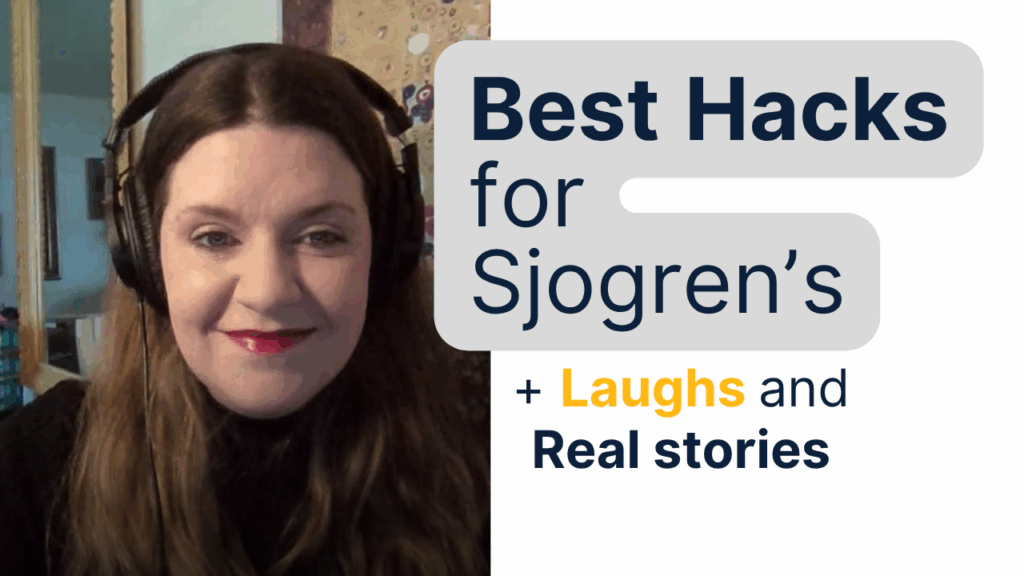Between disrupted sleep, flare-ups, and the emotional weight of long dark days, it can feel like your body is working against you.
As the days shorten and temperatures drop, many people experience lower energy and mood—but for autoimmune warriors, winter can be especially challenging.
If the darker days and cold air are already taking a toll—you’re not alone.
For those of us managing autoimmune conditions, winter can be more than just chilly—it can trigger fatigue, pain, and even emotional dips.
The good news? There are simple, science-backed strategies to help you thrive through the season, not just survive it.
Inspired by our Invisible Strength Podcast, here are seven stackable hacks to help you reset your rhythm, lift your mood, and protect your health this winter.
7 Hacks to Protect Your Energy & Mood this Winter
1. Sync Your Sleep Schedule — Protect Your Rhythm, Protect Your Health
When the clocks roll back and daylight slips away earlier each evening, your body’s natural rhythm—your circadian clock—can lose its sense of direction.
For most people, it’s an inconvenience. But for autoimmune warriors, it can be a major disruptor.
🎯 Why this matters
Why? Because your immune system is deeply tied to your sleep-wake cycle. When that cycle gets thrown off—even by an hour—it can cause your body to misread time-based cues for repair, hormone release, and inflammation control. The result? Flare-ups, brain fog, or that “wired but tired” feeling that makes rest feel impossible.
This is what researchers now call “social jet lag”—the biological confusion caused by artificial time shifts. Your body thinks it’s in one time zone while the world moves to another. And just like after a red-eye flight, your energy, focus, and immunity take a hit.
🧠 The Science Behind It
Your cortisol levels should rise gently in the morning to help you wake up, and melatonin should peak at night to trigger sleep. When your schedule changes abruptly, cortisol can spike at the wrong time, leading to anxiety, shallow sleep, and increased inflammation—especially in those managing autoimmune disorders like Hashimoto’s, lupus, or rheumatoid arthritis.
Consistency is the antidote. Keeping your sleep and wake times steady—even on weekends—anchors your hormones and signals safety to your body. This stability reduces immune stress and helps restore the energy you lose to constant “catch-up fatigue.”
🌿 Community Tip: Reset Without Overcorrecting
Even after a restless night, resist the urge to “sleep in.” Instead, wake up at your regular time, step into natural light within the first 30 minutes, and move your body gently—stretching or deep breathing is enough.
If exhaustion lingers, restore yourself with a 20–30 minute nap or try Yoga Nidra, a guided deep rest practice that resets your nervous system without disrupting your sleep rhythm.
💬 Bonus Insight: Many autoimmune clients in Invigorate’s coaching programs find success by pairing sleep consistency with wind-down anchors—small evening rituals like journaling, herbal tea, or dimming lights an hour before bed. The brain loves predictability; it treats these cues as “soft signals” that it’s safe to shut down for the night.
2. Chase the Morning Light— Reset Your Internal Clock & Support Immune Focus
Shorter days and gray skies might tempt you to stay indoors—but morning light is one of the most powerful reset signals for your body’s internal clock, especially for people managing autoimmune conditions.
Early light exposure tells your system: “It’s time to be awake. You are safe. Repair and restore can start.”
🧬 Why this matters
- Light is the strongest “zeitgeber” (a time cue) for the human circadian system: even 5 minutes of bright morning light can shift your circadian phase. (Source)
- A recent study found that higher morning & daytime light exposure was associated with better subjective and objective sleep metrics—even when compared with high evening light exposure. (Source)
- For autoimmune-warriors, a well-entrained circadian rhythm supports optimized hormone release (like cortisol, melatonin) and immune regulation—reducing the risk of flares from rhythm disruption.
🌿 Invigorate Tip: Make Morning Light Your Superpower
- Upon waking, step outside, open a window, or stand by the brightest natural light you can find within 30 minutes of waking.
- Aim for 10–30 minutes of light—studies show even this window produces meaningful shifts. (Source)
- If you cannot go outdoors (early winter darkness, bad weather), consider a bright-light box (5,000 lux or more) for 20-30 minutes. One study showed 30 minutes of bright light produced ~75 % of the phase advance compared with much longer treatments. (Source)
- Pair your light exposure with a short movement or stretch—this helps your brain register this is the start of the day.
💡 Unique Perspective
While most articles say “get morning light to improve sleep,” at Invigorate we frame this as immune-rhythm therapy. When your light exposure is consistent, your internal clock treats your repair systems (immune resets, hormone peaks) as trustworthy—this means fewer false alarms in your body (e.g., flare-signals, fatigue spikes).
Also: in winter, many autoimmune clients skip the outdoor step. Treat the 10–30 minute window as non-negotiable immunity insurance, not just “nice to have”.
3. Layer Up for Comfort and Circulation— Use Temperature & Layers to Soothe Body & Immune Stress
Cold weather isn’t just uncomfortable—it can actively trigger flare-prone physiology in autoimmune conditions.
The drop in temperature affects circulation, muscle stiffness, nerve sensitivity, and even immune cell behaviour.
🔍 The science
- Cold exposure has been shown to enhance inflammatory pain development via changes in cytokine production and microglial activation in animal models of arthritis. (Source)
- External cold stress can reduce skin and peripheral limb blood flow, which in turn can amplify autoimmune symptom triggers (pain, stiffness). (Source)
- A winter weather review note: individuals with arthritis are more sensitive during temperature drops, possibly due to the combined effects of circulation reduction and immune signaling. (Source)
🌿 Invigorate Tip: Smart Winter Layering & Internal Warmth
- Use layered clothing (thermal base, insulating mid-layer, protective outer layer) to keep core and extremities warm. Don’t just rely on a heavy coat—think about hand/wrist coverage, heated socks or gloves, and keeping feet off cold floors.
- Consider brief “warm-up” rituals: a warm beverage, a heated vest, hand warmers—these small steps increase blood flow and send a message to your nervous and immune systems: you’re safe, you’re warm, no extra flare alert needed.
- Limit prolonged exposure to cold outdoors—if you must, have a short-duration plan (e.g., 15 minutes fresh air) then retreat to warmth and hydration. This reduces the duration your body is under cold stress.
💡 A Different View
Most guidance says “stay warm so you don’t get sick.” At Invigorate, we frame this as immune-navigation: colder environments increase internal ‘noise’—signals that your body might misinterpret as threats or damage (especially when immune systems are already sensitised). By proactively keeping your body warm and stable, you reduce the extra load your immune system carries just to maintain equilibrium.
And we emphasise: warming extremities (hands, feet) is often neglected but crucial for circulation-dependent conditions like Raynaud’s or small-vessel inflammation.
4. Soothe Your Evenings with Warm Rituals — Signal to Your Body That It’s Time to Rest
Evening is not just the end of day—it’s a window of opportunity to transition your body out of fight–or–flight, diminish sympathetic nervous-system activity, and enable parasympathetic rest and repair.
For autoimmune warriors, this period is vital: the body does a large portion of its repair & immune regulation overnight.
📚 The research
- “Passive body heating” (warm baths/showers ~40-42.5 °C for 10 minutes, 1–2 hours before bed) improved sleep quality and reduced sleep onset latency. (Source)
- A warm bath specifically triggered a drop in core temperature afterward, which facilitated quicker sleep initiation. (Source)
- The “temperature drop” is critically linked to signalling sleep readiness—when your skin becomes relatively cooler compared to your core, your brain recognises it’s time. (Source)
🌿 Invigorate Tip: Evening Warmth Rituals with Purpose
- Warm beverage 30–60 minutes before bed: something soothing (e.g., bone broth, herbal tea, golden milk). This helps your core body temperature rise slightly, then drop—supporting sleep-readiness.
- Warm bath, foot soak, or sauna 1–2 hours before bedtime when possible (10–20 minutes) to trigger the cooling trajectory.
- Create light cues: dim overhead lights, use warm-hued lamps, reduce blue-light exposure (screens) to support melatonin release.
- Gentle winding-down movement: restorative yoga, stretching, guided meditation (Yoga Nidra again fits here) to shift into parasympathetic mode.
💡 Our Perspective
Rather than generic “have a nighttime routine,” our community suggests creating a “rest-gateway ritual”—a small warm-signal that communicates to your immune-body loop: we’re switching to repair mode. Framing it this way helps clients view the ritual not as optional but as a strategic toggle: work mode off → restoration mode on. Especially meaningful when body systems already run high alert (autoimmune contexts).
5. Break the Isolation Cycle — Connection as Immune Resilience
Winter doesn’t just bring cold and dark skies—it often brings isolation. Less daylight, colder temps, and shorter days can reduce our inclination to connect, which in turn can harm mental and physical health.
For those managing autoimmune conditions, social isolation isn’t just lonely—it increases stress load and the probability of flare-triggering responses.
🎯 The evidence
- Prolonged social isolation and loneliness are linked to increased risk of physical diseases (heart disease, immune dysregulation) and psychiatric disorders (anxiety, depression). (Source)
- In winter months especially, feelings of loneliness rise because of reduced daylight and increased indoor time – this reduction in social connection is a risk factor for mood decline and health negativity. (Source)
- Among older adults, social isolation peaks in winter and correlates with declines in health metrics. (Source)
🌿 Invigorate Tip: Create Connection Micro-Moments
- Schedule brief, purposeful check-ins: 2-minute voice message to a friend, a short text to your support circle, a weekly 15-minute call. These may feel small—but they register as “you belong, you’re seen”.
- Community bridging: Join a virtual support call or peer-group for autoimmune management. Recognizing you’re not alone reduces system stress.
- Outdoor companion time: Even winter walks with a friend produce double benefit—light exposure + social connection.
- Use pre-written prompts: “What’s one good thing that happened today?” “What’s one way I moved my body today?”
These create quick meaningful exchanges without draining energy.
💡 Unique Perspective
At Invigorate, we reframe connection as “immune-communication support”—when you share your journey, your nervous system recognises safety: I’m seen, I belong, I’m supported.
That signal lowers chronic stress markers, which otherwise—unseen—can feed into flare risk. Our clients often make “two-minute connection” their hotline to reset when the month’s dark days feel heavy.
6. Create Your Own Sunshine Routine — Micro-Habits That Build Up Macro Resilience
The winter season often means less overall movement, more indoor time, and more reliance on willpower alone.
But resilient immune systems and stable moods don’t depend strictly on big blocks of time—they thrive on micro-anchors built into everyday tasks.
⚙️ Why micro-habits matter
- Frequent micro-interruptions (standing, stretching, sightlines to natural light) reset stress hormones and help prevent the cumulative fatigue of “too much sitting, too much screen”.
- Movement improves circulation, lymphatic flow, and metabolic reset—all of which are beneficial when autoimmune conditions can slow your resilience systems.
- These micro-habits also intercept “decision fatigue” (which is amplified in winter) and keep you engaged rather than passive.
🌿 Invigorate Tip: Build Three Micro-Anchors
- Every hour: stand, stretch, walk to the farthest water source or window—2-3 minutes.
- Between tasks: play a short upbeat song, move to a different location, shift posture—this acts as a dopamine little-boost.
- Every evening: pick one non-screen reset: flick the light switch to “warm-halo” bulb, do a 30-second body scan, sip a warm drink.
💡 Unique Perspective
ℹ️ We call this the “Sunshine Routine” even indoors—because it mirrors the architecture of daylight, movement, and mood that your body expects but gets less of in winter. Instead of waiting for “big workout time”, your body gets consistent mini resets that keep your system alive, responsive, and out of the slump-drift zone.
7. Check In with Yourself—And with Your Medical Support Team
Recognising when something is more than “just a winter slump” is key—especially when underlying autoimmune conditions make your baseline different than most.
Fatigue, mood dips, or sleep disruption may signal more than seasonal change—they may signal a flaring immune state, hormone imbalance, or mood disorder.
🩺 The clinical signals
- Sleep consistently below six hours or poor sleep quality → linked with immune dysfunction and elevated inflammation.
- Mood decline, persistent low mood in winter, can indicate Seasonal Affective Disorder (SAD), not just “winter blues”. (Source)
- Cold-weather triggers, increased pain, or circulation issues might warrant a care plan adjustment rather than waiting for them to “settle”.
🌿 Community Tip: Be Proactive, Not Reactive
- Set a monthly check-in: “How is my sleep, mood, pain, energy compared to last month?”
- If sleep <6 h for 2+ weeks, or mood/symptoms are trending worse, schedule a chat with your provider—mention seasonal shift + autoimmune background.
- Leverage supportive tools: light-therapy lamp (may be FSA/HSA eligible) for morning bright light, heated layers (our favorites:🧦Heated vest, gloves, socks, and electric blanket),
- Keep your wellness rituals in place during treatment changes—the base you build helps treatments work better.
💡 A Different Approach
For Invigorate clients, we teach: Your body writes a memo each month—don’t ignore it. This isn’t reactive “call the doc when crisis hits”—it’s monthly immune-check culture. You are far ahead when you treat rhythm, mood, and support as foundational—not just optional extras.
Winter doesn’t have to mean enduring fatigue, flares, and mood dips. By intentionally syncing your sleep, chasing morning light, staying warm, cultivating connection, building micro-habits, and checking in with yourself, you can protect your energy and mood—even in the darkest months.
These small, stackable strategies add up, giving your body the rhythm, safety, and support it needs to thrive.
Remember: resilience isn’t about pushing through—it’s about giving your immune system and nervous system the cues they need to function at their best.
Take Charge of Your Winter Wellness
Feeling the winter slump, fatigue, or flare-ups? You don’t have to just endure the season.
Invigorate coaching helps you turn these challenges into actionable steps—reset your rhythm, lift your mood, and protect your health with strategies tailored to your autoimmune journey.
✨ Start today with our Free Grief Self-Assessment to discover where you are and get personalized guidance for thriving this winter.
✨ Start your journey today—connect with us and discover how small, science-backed adjustments can transform your energy, mood, and health this season.
Dance on, friends,
Karin
P.S. If you live with an autoimmune condition or love someone who does, know this: You’re not alone. Get in touch with us – we’d love to connect!
⚠️ DISCLAIMER: This content is for general education and shared experiences only and is not medical advice. Always consult a qualified healthcare professional before making changes to your care or treatment plan.
🛍️ Affiliate Disclosure: Some product links in this episode may be Amazon affiliate links. As an Amazon Associate, we may earn a small commission from qualifying purchases — at no extra cost to you. These commissions help support the Invisible Strength community and ongoing wellness resources.

 Karin W
Karin W 









